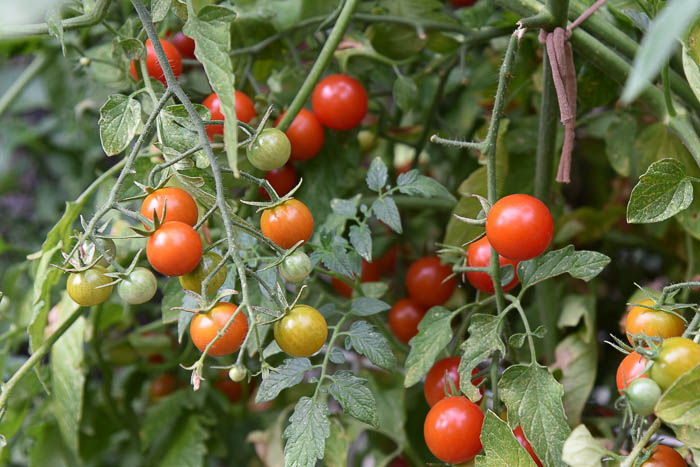Explore Why Some Plants Decline Epsom Salt as a Nutrient Source
In the complex world of plant nourishment, the denial of Epsom salt as a sensible nutrient resource by some plants postures an interesting dilemma. The reasons behind this discerning behavior dive right into an intricate interplay of plant absorption mechanisms, the special chemical framework of Epsom salt, and plant-specific nutrient choices.
Plant Absorption Devices
In diving right into the intricate realm of plant absorption mechanisms, it ends up being obvious that the process is regulated by an innovative interaction of physical characteristics and molecular paths. Plants soak up nutrients largely via their origins, making use of various transport systems to uptake crucial aspects such as nitrogen, magnesium, phosphorus, and potassium. Magnesium, a vital part in chlorophyll synthesis and enzyme activation, plays a critical duty in plant growth and advancement.
The absorption of magnesium involves a number of actions, beginning with its schedule in the dirt service. Once dissolved, magnesium ions are occupied by plant roots via details transport healthy proteins embedded in the cell membranes. These healthy proteins help with the movement of magnesium throughout the origin cell wall surfaces and right into the plant's vascular system, where it is then dispersed to various cells to support different physical features.
Comprehending the detailed mechanisms behind magnesium absorption in plants clarifies just how this essential nutrient adds to overall plant wellness and performance. By optimizing magnesium uptake paths, farmers can enhance plant yields and quality, highlighting the significance of understanding plant absorption characteristics for lasting agriculture practices.
Epsom Salt Chemical Structure
The chemical framework of Epsom salt, additionally known as magnesium sulfate heptahydrate, exposes a distinctive setup of elements that add to its special residential or commercial properties and applications. The 7 water particles are freely bound to the magnesium sulfate substance, allowing it to liquify easily in water and be conveniently taken up by plants with their origins.
The crystal framework of Epsom salt develops monoclinic prisms, which are extended crystals with identical ends. This crystal shape affects the physical residential properties of Epsom salt, such as its appearance and solubility. Comprehending the chemical structure of Epsom salt is critical for understanding its actions as a nutrient source and its interactions with plants in gardening and agricultural methods.
Plant-Specific Nutrient Preferences
Plants show distinct preferences for details nutrients, emphasizing the relevance of understanding their individual needs for ideal growth and advancement. These preferences are determined by different variables, consisting of the plant varieties, stage of growth, environmental conditions, and soil structure. For instance, some plants might grow in nitrogen-rich dirts, while others call for even more phosphorus or potassium for healthy development. Understanding these plant-specific nutrient choices is vital for making the most of Full Report crop yields, boosting decorative plant growth, and advertising overall plant health - what plants don't like epsom salt.

Plant-specific nutrient preferences can likewise differ based on whether the plant is a monocot or dicot. By customizing nutrient supplements to meet the exact demands of each plant species, growers can enhance plant growth, lessen nutrient waste, and assistance sustainable farming techniques.

Dirt Ph and Nutrient Uptake
Given the important function of plant-specific nutrient choices in maximizing growth and health, comprehending the connection in between soil pH and nutrient uptake ends up being extremely important. Dirt pH plays a vital function in figuring out the schedule of important nutrients for plant uptake. Various plants have differing pH choices for ideal nutrient absorption. Acidic soils with a lower pH are beneficial for plants like blueberries and azaleas, while alkaline dirts with a greater pH fit plants such as lilacs and clematis.
On the various other hand, alkaline soils might limit the schedule of nutrients informative post like iron, copper, and zinc, affecting plant growth. Keeping the suitable pH level in the soil is essential for making certain that plants can effectively uptake the required nutrients for their healthy growth and efficiency.
Genetic Aspects in Nutrient Uptake
In the realm of plant nourishment, the interaction of hereditary elements significantly influences the uptake of necessary nutrients critical for plant growth and advancement. Genetic elements play a crucial role in forming a plant's capacity to absorb and utilize nutrients properly. Variations in genetics can affect the expression of transport proteins in charge of relocating nutrients across cell membrane layers. These transportation proteins, such as channels and service providers, are encoded by specific genetics that can differ amongst plant species or perhaps within the very same types.
Moreover, hereditary aspects also identify the effectiveness of nutrient uptake systems within plants. For circumstances, some plants might possess hereditary traits that enhance their capability to feed pop over here on nutrients from the dirt efficiently, giving them a competitive advantage in nutrient-poor atmospheres. On the various other hand, hereditary variants can also result in constraints in nutrient uptake, making specific plants extra prone to shortages even when nutrients are bountiful in the soil.
Understanding just how hereditary factors affect nutrient uptake is vital for developing techniques to optimize plant nourishment and improve crop performance in different farming setups. By deciphering the hereditary mechanisms associated with nutrient uptake, researchers can function in the direction of establishing genetically boosted plant varieties with boosted nutrient procurement capacities.
Final Thought

In the complex world of plant nutrition, the rejection of Epsom salt as a feasible nutrient resource by some plants postures an appealing problem. what plants don't like epsom salt. Understanding these plant-specific nutrient choices is important for making the most of plant yields, boosting decorative plant development, and promoting general plant health and wellness
By customizing nutrient supplementation to meet the exact needs of each plant species, cultivators can maximize plant growth, lessen nutrition waste, and assistance lasting agricultural techniques.
In the realm of plant nourishment, the interaction of genetic factors dramatically affects the uptake of vital nutrients crucial for plant development and growth. Understanding these complexities in plant nutrient uptake is crucial for maximizing plant growth and health and wellness in agricultural techniques.
Comments on “What Plants Don't Like Epsom Salt? A Comprehensive Overview”